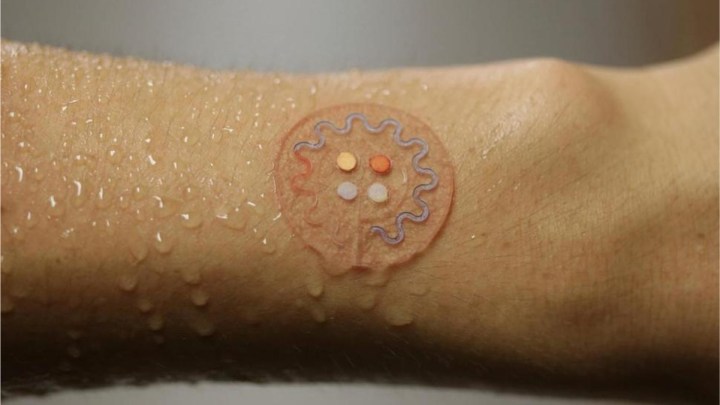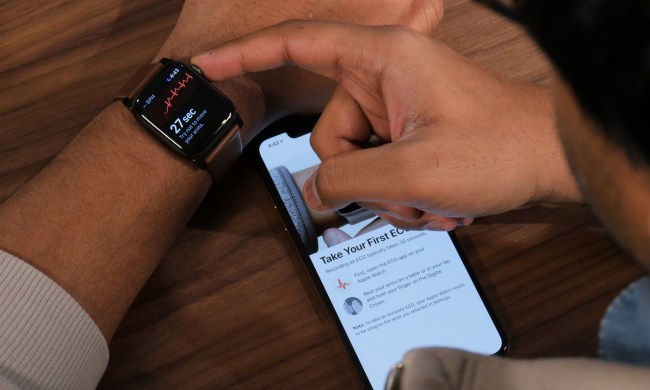
While this sounds a lot like other fitness trackers, this is on another level. Just a bit bigger than a quarter, this smart sticker adheres to even the sweatiest of sports participants and exercisers.
Many wearables today track calories, activity, and heart rate. This skin patch, however, would be “radically different,” says John Rogers, director of Northwestern University’s Center for Bio-Integrated Electronics. “Sweat has biochemical components within it that tell us a lot about physiological health.”
By testing your sweat, the biosensor could warn an athlete that their electrolytes are low. This technique would offer a much earlier signal than the one we receive when we begin to feel dehydrated.
Rogers, though, has his eyes beyond standard fitness. With additional research, the patch could screen patients for diseases like diabetes or cystic fibrosis.
So how does it work? All you have to do is stick the patch on your skin and get moving. There are tiny channels within the patch that collect sweat and draw it to different compartments. Here is where the sweat reacts with chemicals and changes color to signify sweat loss, acidity, and levels of chloride, glucose, and lactate. Basically, the colors symbolize your hydration and electrolyte levels.
Carrying around a color chart would be cumbersome, and that’s where a smartphone comes into play. By taking a picture with an app, the phone interprets the colors for you.
To test the new biosensors, Rogers’ research team attached them to the arms and backs of some volunteers. As a control, nine volunteers rode exercise bikes in a gym using the sweat-testing method we use today. This involves taping absorbent pads and sending them off to a lab. The remaining 12 wore the patches during an outdoor race in Tucson, Arizona.
As expected, the skin patches stayed in place during the real-world scenario. Additionally, the patch wearers’ biochemical test results matched what was gathered in the control group.
There remains a lot of testing to be done before Rogers’ skin patches can go into production. Still, they stand as the next step in wearable fitness trackers.
Sweat is more useful than we give it credit for, and it’s finally time for us to listen to it.


